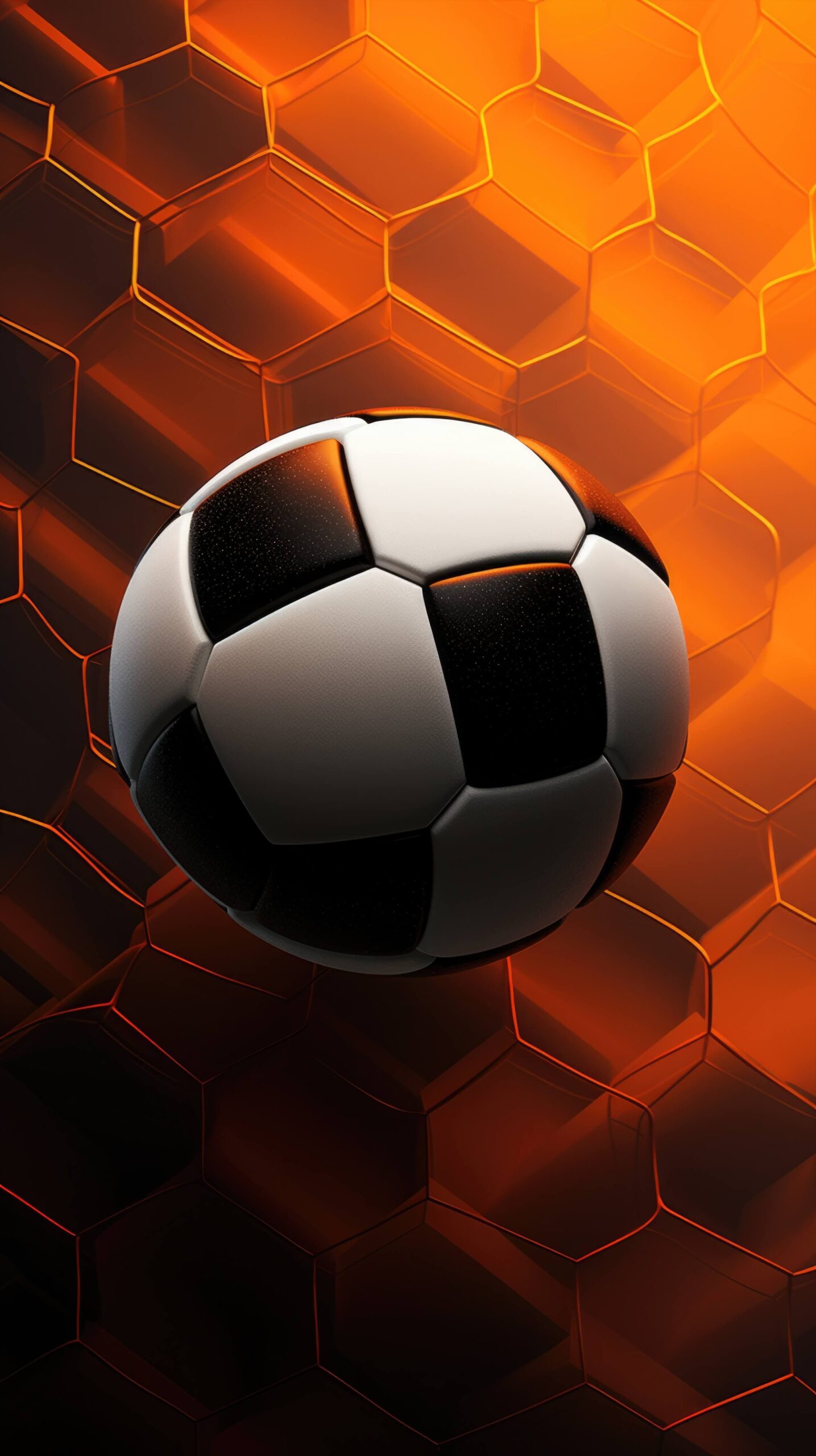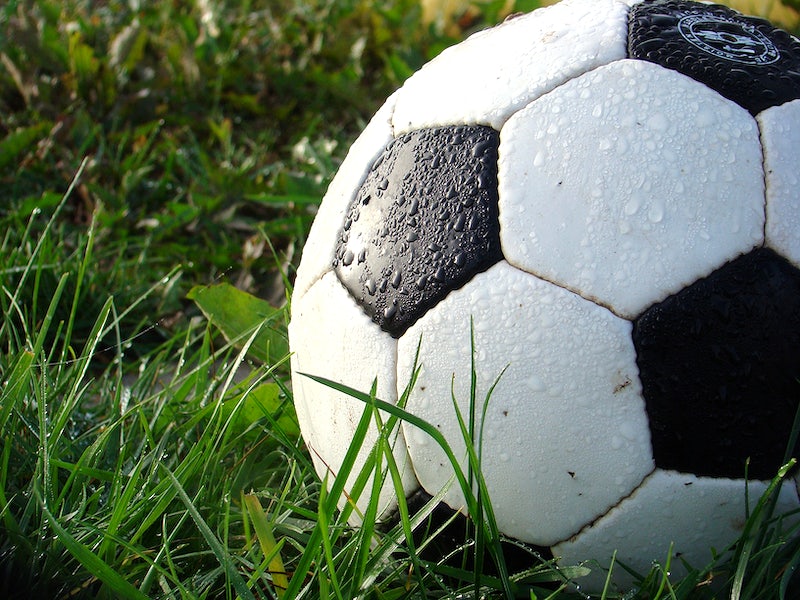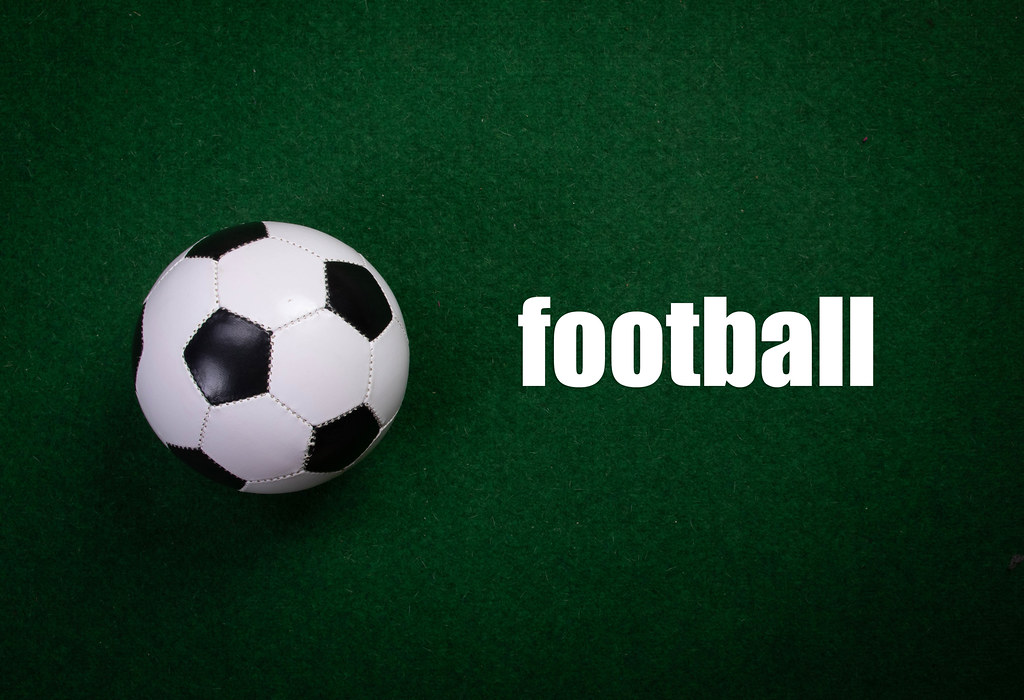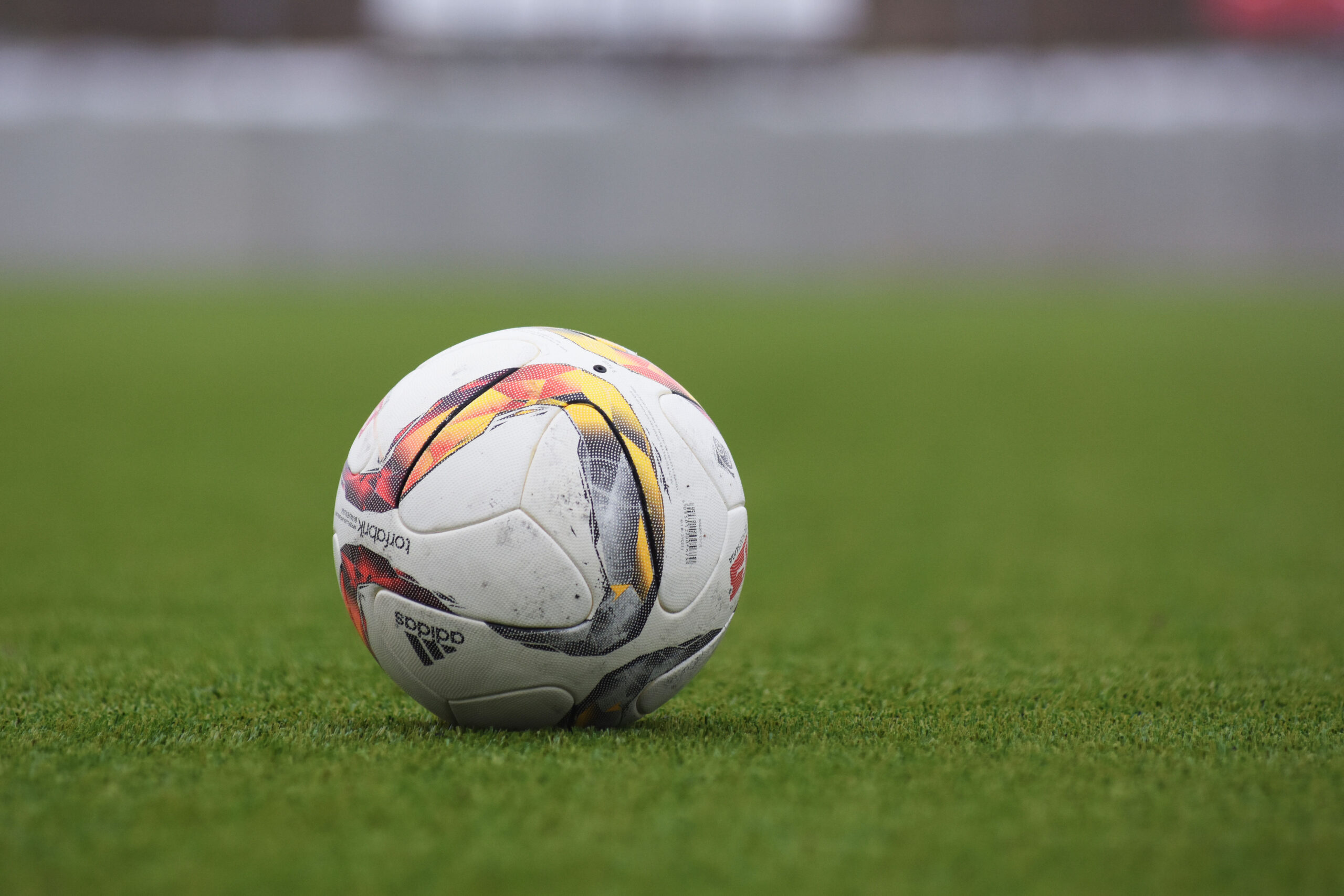How Do Soccer Balls Curve

Have you ever wondered how soccer balls are able to curve in mid-air, seemingly defying the laws of physics? Well, it turns out that there is a fascinating science behind this phenomenon. The way a soccer ball curves is a result of the combination of its design, the force applied when kicking, and the interaction between the ball and the air it moves through.
Now, let’s delve into the intricacies of how soccer balls curve. The key factor lies in the ball’s surface texture and the way it interacts with the air. When a player strikes the ball with a specific spin, the air molecules on one side of the ball move faster than the other side, creating an imbalance in pressure. This difference in pressure causes the ball to deviate from its initial path, resulting in that mesmerizing curve that leaves goalkeepers and spectators alike in awe.

The Physics Behind Curving Soccer Balls
Curving a soccer ball is a skill that many players aspire to master. Whether it’s a free-kick bending around a wall of defenders or a perfectly placed corner kick into the goal, the ability to make a soccer ball curve can be a game-changer. But how exactly do soccer balls curve? The answer lies in the principles of physics and the interaction between the ball and the air it moves through. In this article, we will explore the step-by-step process of how soccer balls curve and the factors that contribute to their movement.
Step 1: The Magnus Effect
The phenomenon that allows soccer balls to curve in flight is known as the Magnus effect. The Magnus effect occurs when a ball is spinning while moving through the air. As the ball spins, it creates a difference in air pressure on opposite sides of its surface, causing the ball to experience a force perpendicular to its direction of motion. This force is known as the Magnus force, and it is what causes the ball to curve.
When a soccer ball is struck with spin, the friction between the ball’s surface and the air causes the air directly around the ball to move along with the spin. This movement of air creates a pressure difference, with higher pressure on one side of the ball and lower pressure on the other. According to Bernoulli’s principle, the air on the side of the ball with lower pressure will move faster than the air on the side with higher pressure. This difference in airspeed creates the Magnus force, which acts perpendicular to the ball’s path and causes it to curve.
The direction and magnitude of the curve depend on the speed of the ball, the amount and direction of the spin, and the density of the air. A ball spinning in one direction will curve in the opposite direction, and the faster the spin, the greater the curve. Additionally, a ball will curve more in denser air, such as at lower altitudes, due to the increased air resistance.
In summary, the Magnus effect is the underlying principle that allows soccer balls to curve. The spin applied to the ball creates a difference in air pressure, resulting in the Magnus force and the subsequent curved trajectory.
Step 2: Spin and Ball Flight
Now that we understand the Magnus effect, let’s explore how spin affects the flight path of a soccer ball and causes it to curve. When a player kicks a ball with spin, the direction and speed of the spin determine the type of curve the ball will produce.
Backspin: When a ball is struck with backspin, the top of the ball is spinning backward relative to its forward motion. This creates an air pressure difference that generates lift, causing the ball to stay in the air longer and have a higher trajectory. The backspin also reduces air resistance on the top of the ball, allowing it to travel farther. As a result, a ball with backspin will tend to curve upward and have a longer hang time.
Topspin: On the other hand, topspin is when the bottom of the ball is spinning forward relative to its flight. This creates a pressure difference that pushes the ball down, causing it to sink faster. The topspin also increases air resistance on the top of the ball, resulting in a shorter flight distance. A ball with topspin will tend to have a more direct and downward trajectory.
Side spin: In addition to backspin and topspin, soccer balls can also be kicked with side spin. Side spin refers to the spin applied horizontally to the ball, causing it to curve to the left or right. The combination of the Magnus effect and side spin creates a curved path as the ball moves through the air. The amount of side spin applied determines the degree of curve, with more spin resulting in a sharper curve.
By understanding the impact of spin on ball flight, players can manipulate the trajectory and curve of the ball to their advantage during a game. Whether it’s bending a free-kick around the defensive wall or whipping in a cross that curls towards a teammate, spin plays a crucial role in the art of curving soccer balls.
Step 3: External Factors
While the spin of the ball is a significant factor in determining its curve, there are also external factors that come into play. These include the surface of the field, the weather conditions, and the altitude of the location.
Field surface: The type and condition of the field can affect how a ball behaves when it bounces or rolls. A grass field with longer blades may slow down the ball, reducing its curve, while a well-maintained artificial turf can provide a more predictable surface for curving shots.
Weather conditions: The weather, particularly the wind, can have a significant impact on a ball’s curve. A strong headwind can counteract the spin and make it more challenging to generate a significant curve, while a tailwind can amplify the curve. Crosswinds can also influence the direction of the curve, causing the ball to deviate from its intended path.
Altitude: The altitude at which a game is played can affect the density of the air and, consequently, the behavior of the ball. In higher altitudes, where the air is thinner, balls tend to travel faster and have less air resistance, resulting in a reduced amount of curve compared to lower altitudes.
Step 4: Technique and Training
Curving a soccer ball is a skill that can be learned and improved through practice and proper technique. Here are some tips to enhance your ability to curve the ball:
- Focus on proper foot positioning: The way you contact the ball with your foot can significantly impact its spin. For example, striking the ball with the outside of your foot can create more side spin and result in a greater curve.
- Practice different types of spins: Experiment with backspin, topspin, and side spin to understand how each affects the flight path of the ball. This will allow you to have more control over the curve you want to achieve.
- Work on your technique: Developing a consistent and smooth kicking technique will help you generate more power and spin on your shots, giving you better control over the ball’s curve.
- Study the masters: Watch videos of professional players who are known for their ability to curve the ball. Pay attention to their body positioning, approach, and contact with the ball to gain insights into their technique.
- Utilize training aids: There are various training aids available, such as curved practice balls or specialized equipment, that can help you improve your curving skills.
Step 5: Practice and Experiment
As with any skill, practice is key to mastering the art of curving soccer balls. Regularly practice your kicking technique, experiment with different spins and angles, and learn to read and adapt to the external factors that can influence the ball’s curve. Over time, with dedication and perseverance, you will develop the ability to curve the ball with accuracy and precision.
So, the next time you watch a soccer match and marvel at the curve on a free-kick or a corner kick, remember that it is the result of the Magnus effect, spin, and a combination of various factors. Understanding the physics behind curving soccer balls can not only deepen your appreciation for the sport but also help you improve your own skills on the field.


Frequently Asked Questions
Soccer balls curve due to a combination of factors such as spin, aerodynamics, and the surface of the ball. This phenomenon is what makes the game so exciting, as players can manipulate the ball’s trajectory to their advantage. In this section, we will answer some common questions about how soccer balls curve.1. How does spin affect the curve of a soccer ball?
Spin plays a crucial role in determining the curve of a soccer ball. When a player strikes the ball with a spinning motion, it creates an imbalance in the forces acting on the ball, resulting in a curved trajectory. Depending on the direction and speed of the spin, the ball will curve either to the left or right. Spin affects the airflow around the ball, causing it to deviate from a straight path. This is known as the Magnus effect. The spin creates areas of low and high pressure on opposite sides of the ball, creating a pressure differential that causes the ball to move in the direction of lower pressure. So, when a player applies spin to a ball with precision, it can curve past defenders or bend around a goalkeeper.2. Does the design of the soccer ball impact its ability to curve?
Yes, the design of a soccer ball plays a significant role in its ability to curve. Modern soccer balls have a specific design with panels stitched together. The seams or ridges formed by these panels can affect the airflow around the ball, influencing its trajectory. The placement and shape of the panels on the ball can cause changes in the flow of air, resulting in deviations from a straight path. Additionally, the texture of the ball’s surface, including any imperfections or patterns, can impact the airflow and affect the ball’s curve.3. Does the speed at which a soccer ball is kicked impact its curve?
Yes, the speed at which a soccer ball is kicked can affect its curve. When a ball is kicked at higher speeds, it creates more turbulent airflow patterns around the ball. These chaotic air movements can disrupt the ball’s flight, making it harder to predict and control its trajectory. Higher speeds also increase the forces acting on the ball, amplifying the effects of spin and aerodynamics. As a result, faster shots tend to have more pronounced curves, making them more challenging for goalkeepers to save and defenders to intercept.4. Can the surface on which the soccer ball is played affect its curve?
Yes, the surface on which a soccer ball is played can influence its curve. Different playing surfaces, such as grass, artificial turf, or even concrete, can alter the ball’s behavior due to variations in friction and bounce. Grass, for example, allows the ball to grip the surface better, resulting in more controlled curves. On the other hand, turf or harder surfaces may cause the ball to bounce differently, affecting its trajectory. Players need to adapt their techniques based on the playing surface to optimize the curving potential of the ball.5. Can weather conditions impact the curve of a soccer ball?
Yes, weather conditions play a role in the curve of a soccer ball. Factors such as wind speed and direction can affect the airflow around the ball, altering its trajectory. A strong crosswind, for example, can push the ball in the direction of the wind, exaggerating its curve. Conversely, a headwind can resist the ball’s movement, reducing its curve. Players need to account for these weather conditions and adjust their gameplay strategies accordingly to maximize the curve of the ball.Understanding how soccer balls curve is essential for players to master the art of ball control and precision. By leveraging the principles of spin, aerodynamics, surface design, and environmental factors, players can unleash impressive curve shots and passes that leave opponents baffled.
Now that you have a better understanding of the factors behind the curved trajectory of soccer balls, you can appreciate the skill and strategy involved in this beautiful game.
How to curve the ball | Learn bending free kick
So, now you know how soccer balls curve! It’s all about the combination of the spin and the air pressure around the ball. When a player kicks the ball with a certain amount of spin, it creates a pressure imbalance on the opposite side of the ball, causing it to curve in that direction.
The Magnus effect, named after physicist Gustav Magnus, plays a crucial role in the ball’s movement. As the air flows around the spinning ball, it creates a difference in pressure between the top and bottom surfaces. This pressure difference pushes the ball in the opposite direction of the spin, resulting in an elegant curve.


